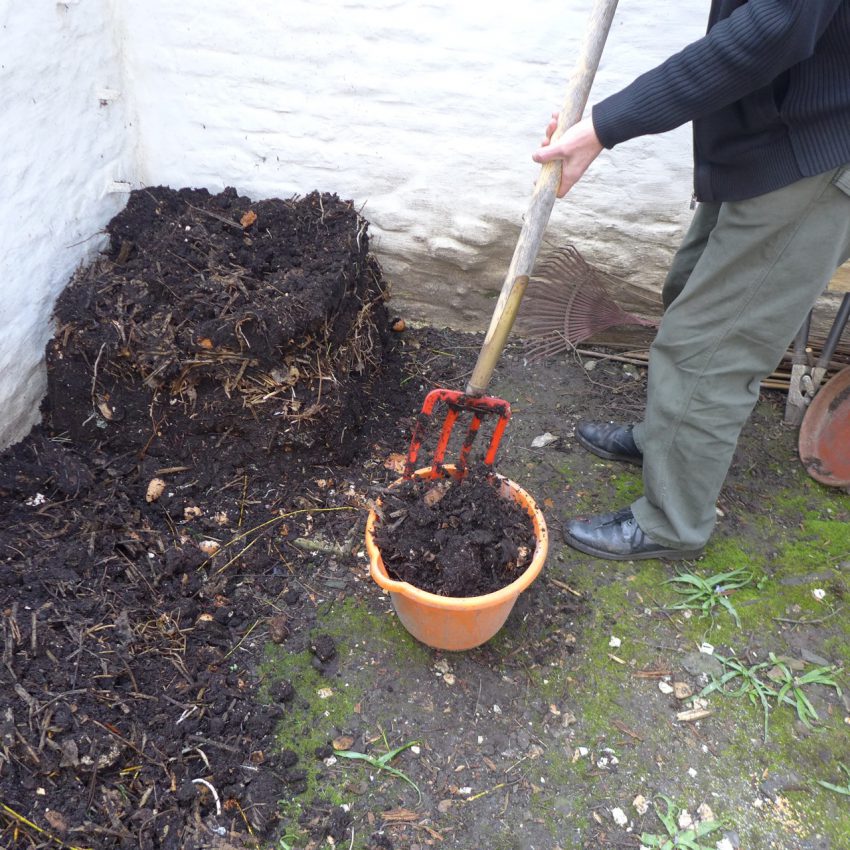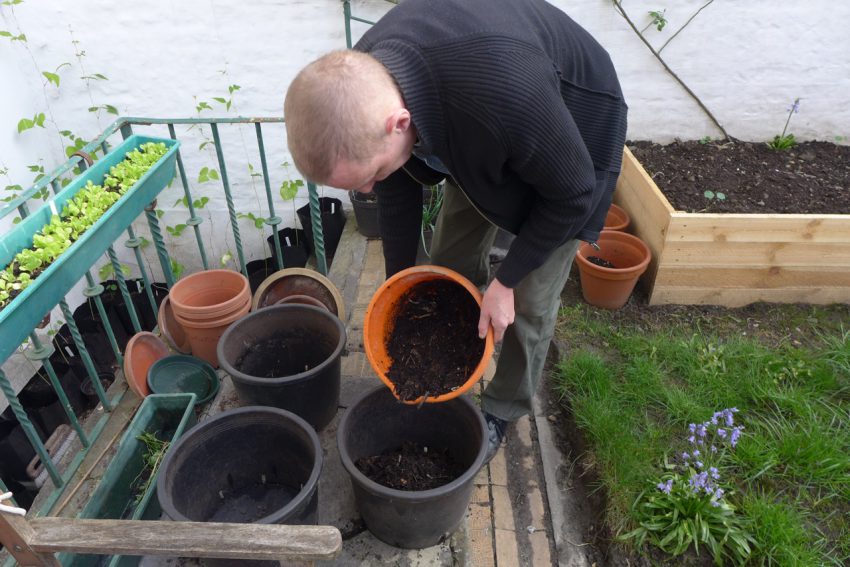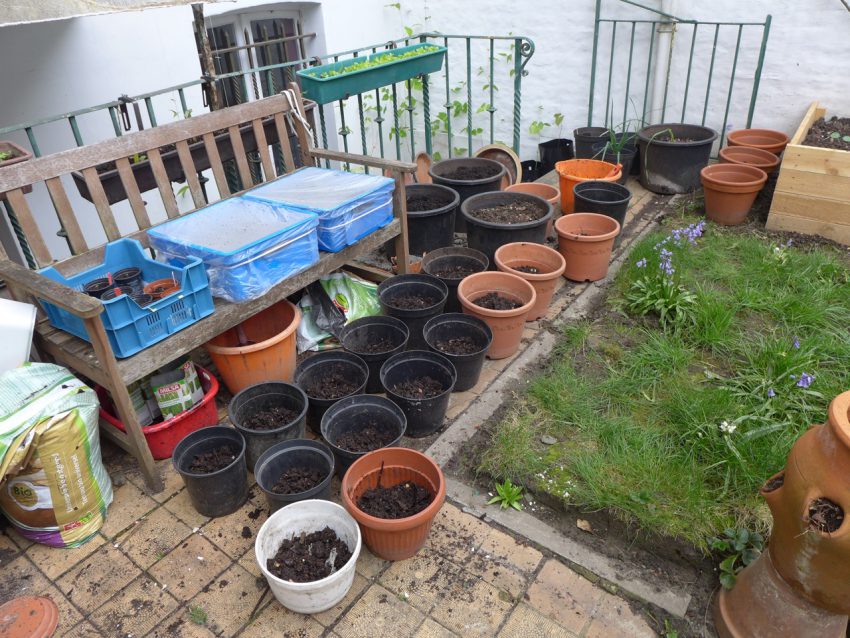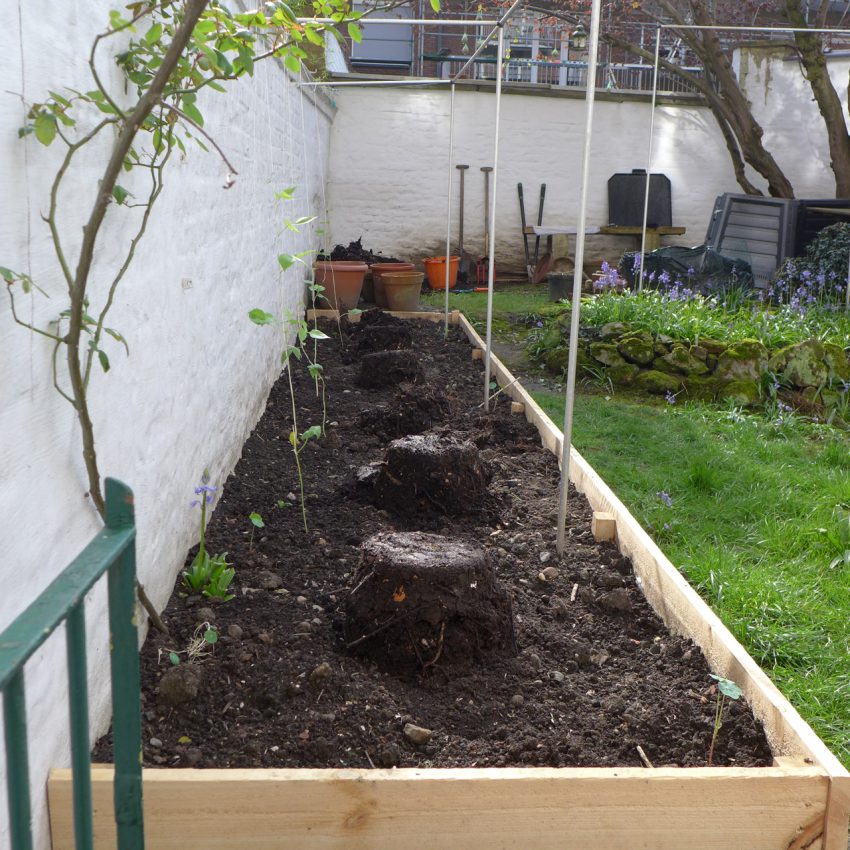
The compost runs all year. In spring the compost is turned out and the raw material from the top put aside for re-starting the new compost pile. Roughly one third from the top is used. The remaining pile is divided into rough and fine material. The rough material is usually rich in worms. The fine material is used for containers.

Moving compost
The most valuable use for compost in a city garden is for containers used around the garden. Vegetables need organically rich soil to produce their best so a good active compost material makes an excellent base for container soil.

Filling containers
The compost is added to containers to half fill them. Later these containers are filled with a standard garden compost material (purchased). The two materials are then mixed together in the container. It is worth considering adding a perlite type material to assist with drainage in the containers.

It is always satisfying in spring to prepare all the containers to be used in the coming growing season. It is useful to prepare all the containers and situate them around the garden before deciding on planting.

Feed for raised bed
Compost is particularly good in a raised bed. Each spring I add a good load of the rough material, rich in worms to the raised bed. It is left overnight (to let the worms migrate into the bed). Over the years the raised bed has not required any additional fertiliser for the plants.

Feeding raised bed
Once the worms have migrated, the material is then worked into the top 2 or 3 inches of top soil. It is ideal if rain follows this (easy enough in Belgium) as this helps mix and settle the material. The bed is now ready for planting.